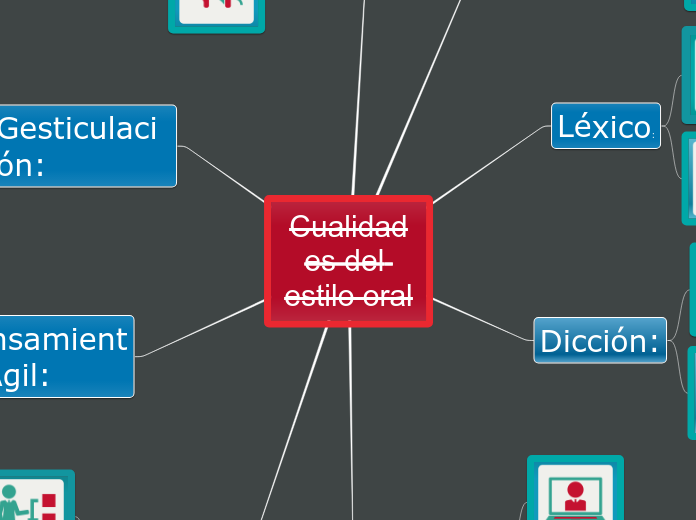TEMA 8
To name your story, you have to think about the overall message and what you want your audience to understand from the story. Also, make it relevant and easy to remember.
FORMACIÓN HISTÓRICA DO LÉXICO GALEGO
CULTISMOS
Incorporados tardiamente.Non evolucionaron da forma latina
SEMICULTISMOS
Non experimentan todos os cambios fonéticos
PALABRAS PATRIMONIAIS
Incorporados na época da conolización romana
Transmisión por vía oral
Evolución total
DO LATÍN VULGAR AO GALEGO-PORTUGUÉS
SUPERESTRATO ÁRABE
Moitas palabras árabes entraron a través do castelán ou do portugués.
A cultura era moi avanzada e incorpórase o galego léxico agrícola,técnico e da ciencia.
Invasión árabe e recoonquista foron feitos claves para a evolución do latín vulgar.
SUPERESTRATO XERMÁNICO
Voces de orixe sueva:laverca,lobio,etc.
Léxico de guerra e costumes
Topónimos rematados en -ar,-ende,-monde,-riz,-ulfe,-xir.
Antropónimos (Afonso)
ROMANIZACIÓN
The ending of a story is essential. We all know that if the ending is weak, what happened before loses its importance. So make it unpredictable, but fair. A resolved ending answers all the questions and ties up any loose threads from the plot.
FASES
This is the closure section of the story.
See examples of possible outcomes below:
- all problems have been solved
- it's clear how each one of your characters ends up
- your main character is transformed by the challenge
A partir do s.III ( latín vulgar como lingua oficial en todo o territorio)
Try answering these questions in order for you to come up with a closure:
- Have all problems been solved?
- Is it clear what happens with all your characters in the story?
- Has the challenged transformed your main character?
- How do the characters feel in the end?
Subtopic
Desde o 29 a.C. ata o s.III ( latín lingua de prestixio)
Ata fins do s. I a.C. (hostilidade contra o pobo invasor)
Try answering these questions to come up with a closure:
- Have all the problems been solved?
- Is there a clear picture of what happens with each character in the story?
- Has the challenge transformed your main character?
- How do the characters feel in the end?
DEFINICIÓN
This is the moment when the main character surpasses the last obstacle and finally faces their greatest challenge.
The climax usually follows one of these patterns:
- realization
- resolution
- choice
Type in your answer.
Proceso histórico de asimilación e incorporación dos pobos ibéricos ao mundo cutural romano.
PERÍODO PRERROMANO
The middle of the story is where you add layers of complications that will lead to the end. Reveal more about the character's journey. Did their personality go through changes? How did they overcome the challenges? And as you build up the story’s central conflict, make it more personal to that character. Also, from the middle act, you have to lead into the final act.
INFLUENCIA DO SUBSTRATO SOBRE O LATÍN
Your character(s) need(s) motivation in order to solve the challenge(s).
posible orixe céltica de: baraza,beizo,etc.
balsa,barro,cigarra,laxe,parra...
topónimos rematados en -obre,-abre,-ebre.
sufixo derivado nominal -ego
sufixo -asc,-usc-
raíz mor-
Secondary characters also might have motivs beacuse of which they may cross path with main character or which might trigger them to help the main character.
raíz carr-
Secondary characters might also have motives that lead them to cross paths with the main character or which might trigger them to help the main character.
CONTEXTUALIZCIÓN
Each story has a main character and that character usually needs to solve a problem or challenge. The character's challenge is the one that creates tension throughout the story.
Proceso de asimilación que implica a desaparición das linguas prerrománicas
Type in any other challenges which other characters in the story need to face.
HISTORIA DA LINGUA
In the beginning of the story (or the exposition), you will need to introduce the setting and characters. You might also want to introduce the main conflict. This part of the story is important because it gives the reader necessary background information and maybe even a first insight into a character’s personality.
ESTRATOS
The setting (time & place) of a story can change throughout the plot.
Superestrato
Sensory details include sight, sound, touch, smell, and taste. These details are important because they create depth in your setting.
See a few examples below:
- the smell of fresh bread
- the scent of freshly cut grass
- rain falling onto the windshield etc.
influencia exercida sobre unha lingua autóctona por unha lingua invasora
Adstrato
The weather is an important element in your story because it can highly influence the ambiance and the mood of the characters.
influencia recíproca entre linguas veciñas ou que conviven nun mesmo territorio.
Does your story include catastrophic weather? See a few suggestions below or add your own:
- hurricane, earthquake, storm, etc
Substrato
Your story can take place wherever your imagination will take you to.
For example: in an elevator, in an enchanted forest, etc. Don't forget to give details of the environment each time the setting changes, otherwise, the story can be confusing. Also, mention the seasons as each of them has unique weather and events.
Linguas que se falan en Galicia antes da chegada dos romanos.
FORMACIÓN DA LINGUA GALEGA
Characters are essential to a good story. Usually, the protagonist(s) is/are the most affected by the plot. Introduce a character by focusing on their actions, interests, and occupation, as the physical appearance doesn't make a difference in most cases.
variedades xeográficas do latín vulgar (latín falado)
Type in the name of your character.
Castelán
Add other qualities/attributes of the character.
Francés
Portugués
Add other properties of the character.
Galego
Which traits best describe the character's personality? Choose more if necessary:
introvertedloyalkindindependentquick-thinkingadventuresomeidealisticsweet-naturedcalmrisk-takercreativewittystrictfussyweirdclumsyharshaggressivecarelessclingingcowardlycrueldeceitfulimpulsiveOther










